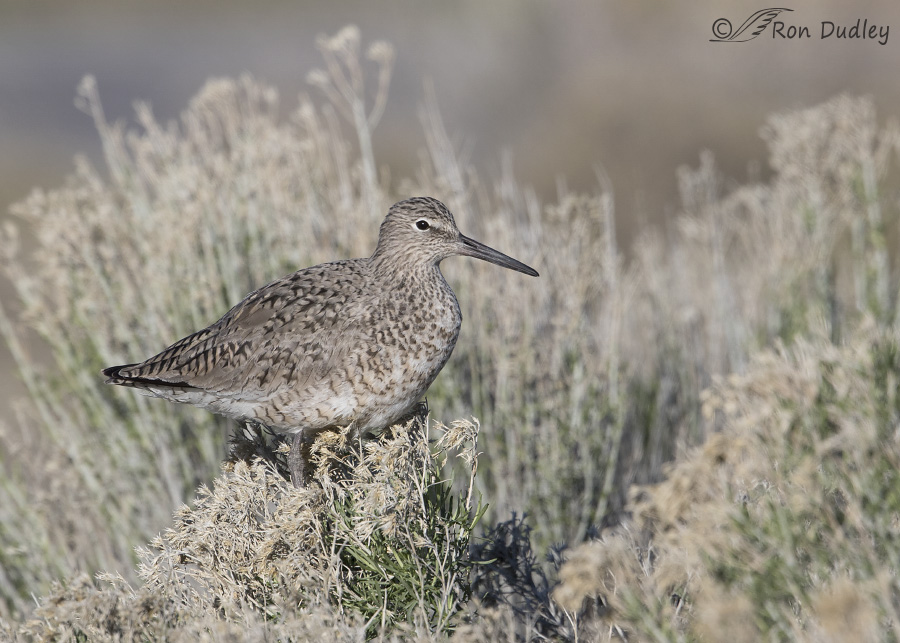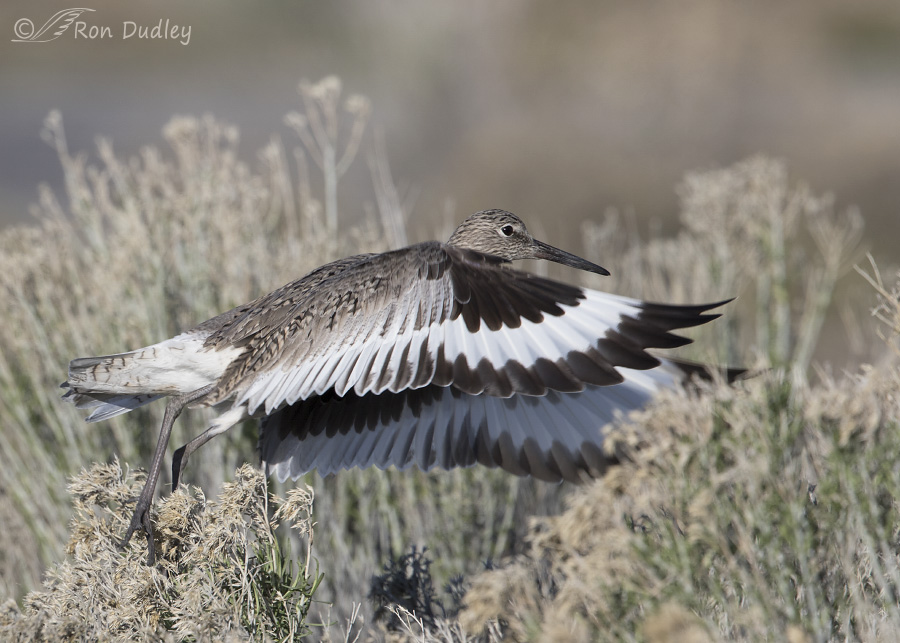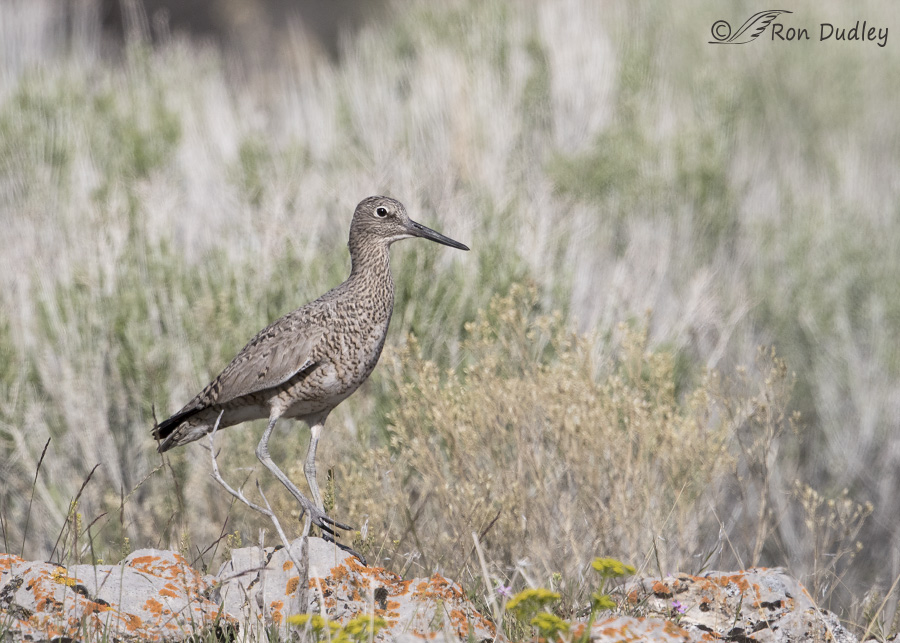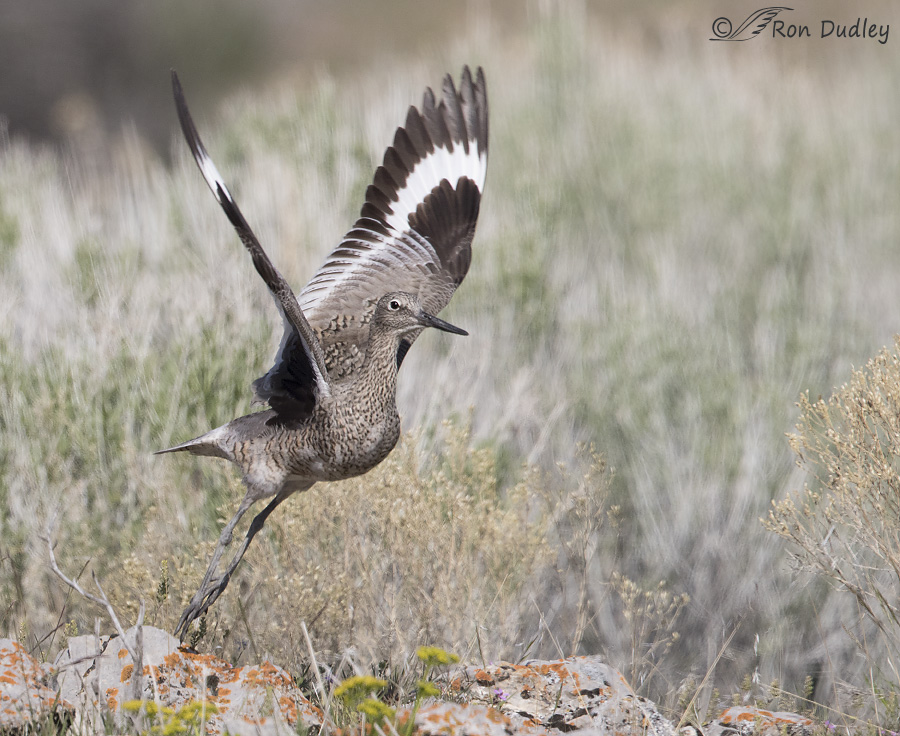Willets make a transformation from drab to splashy when they open their wings.

1/2000, f/7.1, ISO 250, Canon 7D Mark II, Canon EF 500mm f/4L IS II USM + 1.4 tc, not baited, set up or called in
I photographed this one two weeks ago as it was perched in some mixed clumps of greasewood and rabbitbrush on Antelope Island. With their wings closed they’re pretty nondescript and inconspicuous (though still lovely) birds.

1/2000, f/7.1, ISO 250, Canon 7D Mark II, Canon EF 500mm f/4L IS II USM + 1.4 tc, not baited, set up or called in
But when the Willet took off it revealed the broad white wing-stripe, bordered in black, that the species is known for. When the wings are extended Willets turn into quite a visual feast when compared to their former selves. I wish I had a better head turn from this bird but the image gives us a good look at those distinctive wing patterns.
 1/3200, f/6.3, ISO 500, Canon 7D Mark II, Canon EF 500mm f/4L IS II USM + 1.4 tc, not baited, set up or called in
1/3200, f/6.3, ISO 500, Canon 7D Mark II, Canon EF 500mm f/4L IS II USM + 1.4 tc, not baited, set up or called in
Here’s another Willet I photographed ten days ago on the island. Once again, while perched the bird could almost be described as mundane.

1/3200, f/6.3, ISO 500, Canon 7D Mark II, Canon EF 500mm f/4L IS II USM + 1.4 tc, not baited, set up or called in
But when it took off it instantly transformed into a striking, even flashy photo subject. For this reason I love to photograph Willets during takeoff, in flight or when they’re displaying with their wings up.
I suspect that many of my readers are used to seeing Willets along shorelines in their winter range or during migration. But these birds nest on the island and I most often photograph them relatively far away from water in dry habitats like these.
Ron


Wonderful very demonstrative shots Ron!
Charlotte
The more I look at these birds, the prettier they look…before the wing flash…
I couldn’t believe what your blog was on today, Ron, after talking with you about how much more dramatic Roseate Spoonbills are in flight where you can see all of their pink coloring!! I love the 2nd photo the best of all four but any bird is beautiful in it’s own way. Most of the birds that come to my yard’s birdfeeder are Eurasian Collared Doves and White-winged Doves but I still love to watch them!!
I agree, Jo Ann – a bird is a bird and they’re all interesting.
Like a “plain” or “homely” person with a beautiful, dazzling, million dollar smile!
Well said, Patty.
Beautiful birds. Thanks for these great shots. You have me looking at birds in a “whole other way” as they say!!!
Good! Thank you, Carol.
I can hear them, great shots.
Thanks, Jo. Yes, if you’ve heard their call enough times it tends to come into your head when looking at images of them.
Oh how beautiful! I don’t think I’ve ever seen willets, either just sitting around or taking off in flight. Thank you so MUCH!
Thanks very much, Laura.
Great shots Ron! Looking at the second picture one wouldn’t know how surprising the back and white in the wing might be to a possible intruder.
These images bring back fond memories of when I banded terns on an island off the coast of MA. We had a pair of Willets on the island. I love watching their antics and the black and white in there wings whenever the take off or flutter after something. There must be an evolutionary connection.
Great capture!
“There must be an evolutionary connection”
Dick, they typically hold their wings in a vertical position for a few moments after landing. There must be some evolutionary significance to that behavior but I’ve been unable to discover what it might be.
Great shots, Ron. I’m not familiar with them but they seem to do an “ugly duckling” transformation upon take off! 🙂
They certainly do, Judy. I’ve seen it so often and it always impresses me.